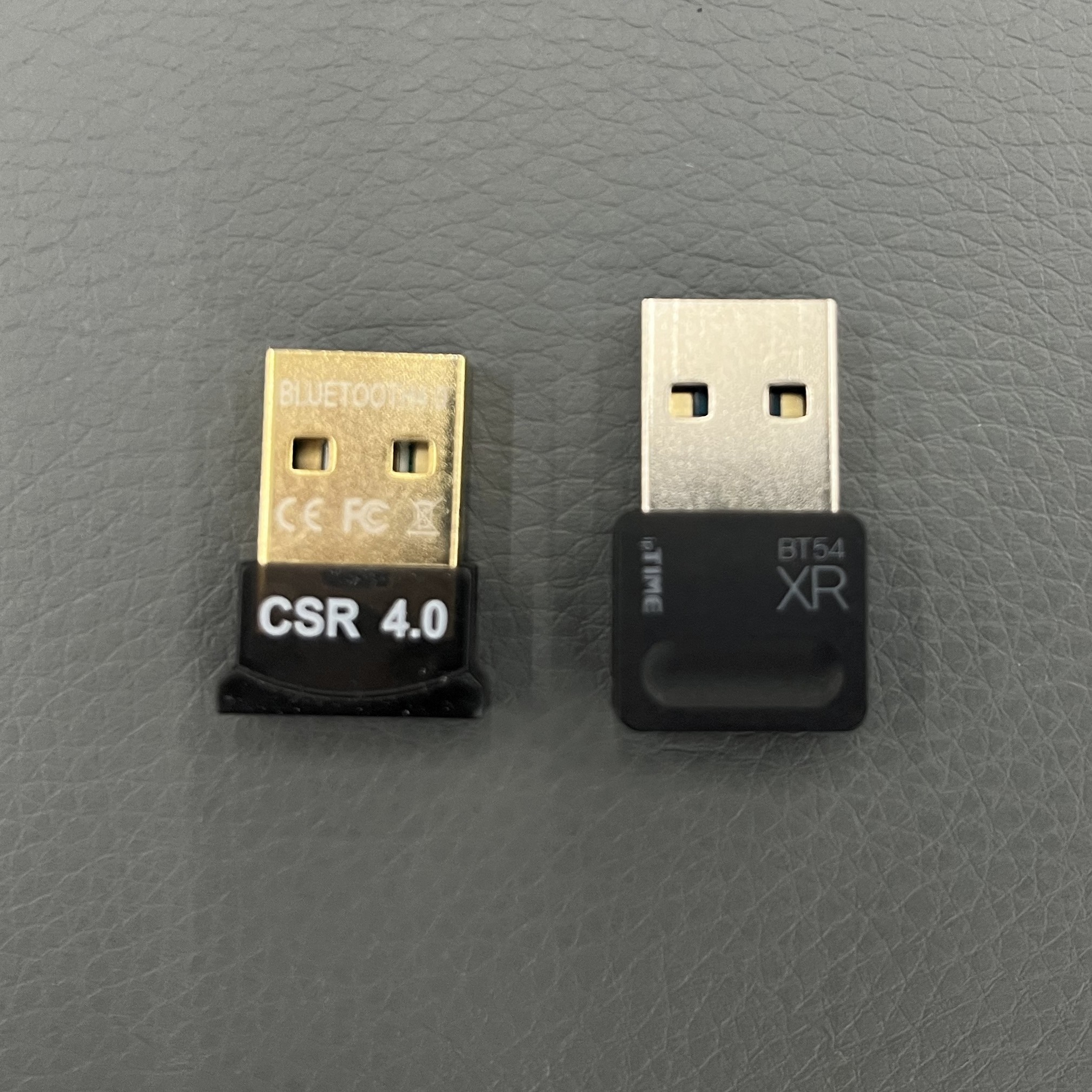In most cases, to use Bluetooth functionality on a desktop, it is common to purchase a separate Bluetooth dongle and plug it into a USB port.
However, if you look at these dongle products, you'll often see the phrase "CSR 4.0" prominently displayed.
Initially, I brushed it off, but suddenly I thought, "What exactly is CSR 4.0?"
Curiosity got the better of me, so I decided to thoroughly整理 this topic.
What Does CSR 4.0 Mean?
CSR 4.0 does not simply mean that it supports Bluetooth 4.0.
Here, CSR stands for Cambridge Silicon Radio, the name of the company.
This company was once quite famous in the Bluetooth chipset industry and was acquired by Qualcomm in 2015.
In other words, a CSR 4.0 Bluetooth dongle can be understood as a product equipped with a "CSR's Bluetooth 4.0 chipset".
The main features of Bluetooth 4.0 version are as follows:
- Support for Low Energy mode (Bluetooth Low Energy, BLE)
- Low latency
- Stable connectivity
The biggest difference compared to its predecessor, Bluetooth 3.0, is the introduction of the BLE feature.
This has made it suitable for connecting low-power devices like wireless mice and keyboards.
How is the Performance of CSR 4.0 Dongles?
In fact, CSR 4.0-based Bluetooth dongles tend to offer decent performance for their price.
However, there are clear limitations when compared to the latest version, Bluetooth 5.x.
✅ Advantages:
- Cost-effective.
- High compatibility with most Bluetooth 4.0 devices.
- Suitable for connecting wireless keyboards and mice due to BLE support.
❌ Disadvantages:
- Slower compared to Bluetooth 5.x
- Shorter connection range (about 10m, shorter if there are obstacles)
- Limits on multi-device connections
- Low-cost products often have large quality variations, and many are not firmware upgradable
In my case, when connecting a headset, keyboard, and mouse simultaneously with a CSR 4.0 dongle, I experienced a notable increase in latency.
Based on experience, up to two devices can be used without issues, but three or more seems to noticeably increase latency.
Why You Need Bluetooth 5.0 or Higher Products?
The latest Bluetooth 5.0 or 5.2 versions have the following advantages:
- Wider connection range (over 40m)
- More than double the transmission speed
- Optimized for multi-device connections
- Improved power efficiency
Therefore, if you want to stream high-quality audio or connect multiple wireless devices simultaneously,
you might want to invest a bit more in a Bluetooth 5.x dongle for a better long-term choice.

On the left is a commonly seen CSR 4.0 dongle, and on the right is a recently purchased Bluetooth 5.4 dongle.
This new dongle uses the Realtek RTL8761B chipset and offers much more stable performance.
Tips for Bluetooth 5.0 Dongles for Linux Users
When trying to buy a Bluetooth 5.0 dongle, most are often labeled as Windows only.
Occasionally, there are dongles labeled as Linux compatible, like those from ASUS, but these tend to be quite expensive.
Even for the same Bluetooth 5.0 product, Windows-only products are very affordable, so Linux users may feel restricted in their choices.
But there's good news.
Many Bluetooth 5.0 dongles labeled as Windows only actually use the Realtek RTL8761B (or RTL8761BU, RTL8761BT) chipset.
To make this chipset recognizable in Linux, do the following:
- Obtain the firmware file
rtl8761bu_fw.binfrom the internet. - Copy the file to the
/lib/firmware/rtl_bt/directory. - Restart the system or reload the Bluetooth module for automatic recognition.
This way, you can use most Linux distributions without issues with a Bluetooth 5.0 dongle without additional driver installation.
By resolving one curiosity, the term 'CSR 4.0' that used to seem unfamiliar now feels familiar every time I see a Bluetooth dongle.
If any of you were curious about this phrase like I was, I hope this article helps!

There are no comments.